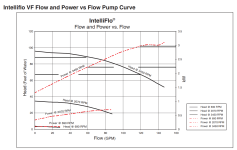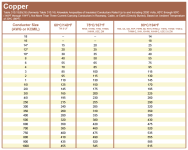Hey everyone, I’m running out of ideas here. I’ve had two electricians come out and verify everything is working fine on the electrical side. It pulls the correct amperage, it never trips the GFCI outlet, it trips after/while raining and if it’s dry.
I have a Doheny pump that’s maybe a month old that recently started tripping the circuit breaker after running 7-12 hours. I cleaned out the internal basket filter, I’ve run it through a plug with a timer, I’ve tried running it directly plugged into the outlet. I haven’t noticed any unusual noises, nor have I identified a specific external variable’s presence when it kicks off. I’m running out of ideas and I’d prefer not spending upwards of $200 on another electrician. Thanks for the help!
EDIT with solution:
Swapped out the circuit breaker and it stopped cutting out for about a week. Had another heavy rain that caused the breaker to trip once again. I bought a cheap plastic pump housing off of Amazon for like $20 and haven’t had an issue since. I think it was some water intrusion into the pump itself causing it to short and trip the breaker. It’s been about 3 months now without an issue and through some seriously heavy storms. Hope this helps anyone having the same problem I had.
I have a Doheny pump that’s maybe a month old that recently started tripping the circuit breaker after running 7-12 hours. I cleaned out the internal basket filter, I’ve run it through a plug with a timer, I’ve tried running it directly plugged into the outlet. I haven’t noticed any unusual noises, nor have I identified a specific external variable’s presence when it kicks off. I’m running out of ideas and I’d prefer not spending upwards of $200 on another electrician. Thanks for the help!
EDIT with solution:
Swapped out the circuit breaker and it stopped cutting out for about a week. Had another heavy rain that caused the breaker to trip once again. I bought a cheap plastic pump housing off of Amazon for like $20 and haven’t had an issue since. I think it was some water intrusion into the pump itself causing it to short and trip the breaker. It’s been about 3 months now without an issue and through some seriously heavy storms. Hope this helps anyone having the same problem I had.
Last edited:














